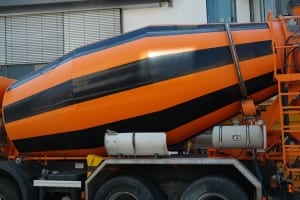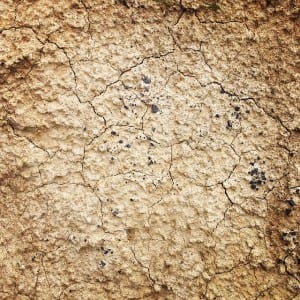(Here’s the Dirt on Dirt!)
Remember being on a playground and seeing your last beloved gummy bear fall to the ground (the white one, the one you were saving for last)? You only hesitated for a split second before you reached down, picked it up, dusted it off, and made the proclamation, “God made dirt, so dirt don’t hurt!”, and popped that candy into your mouth. While it was probably true that the little bit of dirt you ingested didn’t hurt you, the wrong kind of dirt could hurt your plants. What I mean is that not all “dirts” are created equal in the gardening world. Also, in the gardening world, we like use the term soil as opposed to dirt, thank you very much. So let’s get our hands dirty and distinguish which soil would be the best for your different gardening and landscape needs.
(Come on, you wouldn’t eat one off the ground?)
Potting soil- This one will be easy to memorize. Potted plants should be planted in potting soil or potting mix. See? Like how I made that one simple? Many of us get so excited about the vivid colors that are popping up on flowers this time of the year, that we buy armfuls of plants and rush home, forgetting the soil to plant them in. “Oh, I’ll just use that leftover bag of garden soil I have from my vegetable garden.” Stop, don’t do that. There is a reason you should use potting soil for your container plants as opposed to any other type of soil. Potting soil is specially formulated to retain moisture and nutrients, has properties to prevent the soil from getting compacted, and has been pasteurized to protect against any pathogens or disease and insect problems. Common ingredients in potting soils are, peat moss, pinebark, and vermiculite and perlite. In organic potting soil, the peat moss is substituted with compost. These ingredients, in order, give the soil water retention properties, organic matter and stability, and make the soil, light and airy, a must for the circulation of air around the roots of your plants. Choose a potting soil that although, light and airy, is also heavy enough to stabilize itself around the roots. You could even blend a few potting soils together to make a mix that suits you. We love Ladybug Vortex, Happy Frog, and Jungle Growth potting soils. *Don’t forget to wash out your empty pots, every 2 year repotting cycle, with 10% clorox bleach and 90% water, to disinfect against pathogens and break down calcium build up.*
(Give your potted friends the right soil, and they’ll do right by you.)
Garden soil- Gardening soil is a good option to use in a bedding, or vegetable garden for the ground. Garden soil is the soil you already have under your feet. For the most part, here in San Antonio and surrounding areas, we will need to amend our soils to give them the correct balance needed for growing plants. About 85-90% of people living here have clay soil, while there are about 10-15% who may have sandy soil. If you have clay soil, which retains moisture and does not drain well, you will need to mix compost and soil conditioner in with your garden soil (native soil). By doing this you are giving your soil better drainage, allowing air to reach the roots of your plants, and also providing it with acidity, which our clay soils crave. What we usually recommend is to use 1/1/1 ratio. This means 1/3 native soil (what you find when you dig into your ground), 1/3 soil conditioner, and 1/3 compost. Then get down and dirty and mix it really well. If you just layer it without mixing you could run into some problems down the road, because the soils and compost have different levels of absorbency and will not drain the same. Mix it like crazy, like no one is watching you, so you can get a nice even blend.
(Soil conditioner is one of the best additives for your soil, it loosens it and adds acid.)
If you are one of those 10-15% of people who have light, sandy soil, you will need to make your ratio: 1/4 garden soil (from a bag), 1/4 compost, and 1/4 native soil, and 1/4 soil conditioner. Maybe you are not digging into the ground, and you have chosen to make a raised garden bed. If you have built up your raised garden high enough that you don’t have to dig into the ground (ideal is 18 inches deep), we would recommend using a mix of garden soil, compost, peat moss, and soil conditioner. Once again, channel your inner Tasmanian Devil and mix away.
(I doubt you have an industrial mixer like this, so you’ll have to do the job yourself.)
*If you are a poor, unfortunate soul that has dug into the earth only to be greeted with a cream-colored or pale yellow substance, we are sorry to inform you that you have discovered “caliche” or subsoil. This is a layer of soil in which the particles have been cemented together by lime. Caliche is not an amendable soil. You can’t add anything to this to make it better. Caliche will cause a lot of problems for you if you try to plant anything in it. It can cause iron deficiency in plants because of a high pH, it can be so tight that roots can not penetrate through it, and it also restricts water from penetrating into the soil which can lead to poor air circulation and also the accumulation of salt. Your best bet is to dig it all out, and replace with garden and topsoil.*
(If you find this color when digging, prepare to dig it all out.)
Topsoil- Topsoil is used mostly for filling in holes, leveling sloping areas, or as an addition to other soil mixtures in the landscape. There really isn’t a specific list of ingredients that goes into topsoil, so you aren’t ever really sure of what you are getting. Topsoil is a general purpose soil that is chosen for larger landscape needs, and won’t really provide you with nutrients for your lawn or garden. You may have heard that you need to spread topsoil on your lawn after aerating, you would actually be better off adding a thin layer of compost instead. So while topsoil is not bad for your lawn, it also doesn’t lend much in the way of revitalizing it either.
(Your average run of the mill topsoil is not bad, but there’s better stuff out there for you.)
Specialty soils- These still fall in the garden soil category, but these garden soils have been formulated to target specific plants. You will find specialty rose soils, vegetable soils, palm and cactus soils. Some mixes lend acid to the soil (for your acid-loving plants like Azaelas), while some give you more organic material or sand in the mix. There are also those out there that have fertilizer mixed right in, or extra moisture control properties. Depending on which specialty soil you choose, you may have to modify your feeding and watering schedule. Most specialty soils can be made by yourself by adding to a potting or gardening soil that you already have. For instance, for that plant that loves acid, you could add more soil conditioner (crushed pine bark and baled peat moss) to your potting soil, which will slowly decompose and release acid into the soil.
(Crushed pine bark and peat moss can do wonders for acid-craving soil.)
You can see how you can buy everything you need in one bag (potting soil), and also how you may need to amend soil to get the correct product needed for your garden. What I also hope you see is that all soil is not created equally, and that whatever brand you choose, you are now able to at least figure out which type you need. So, here’s to getting the dirt on dirt. If you’re lucky, I’ll soon bring you the scoop on poop (all about compost).
-The Happy Gardener
-Lisa Mulroy









Thank you for your recipes for amending the different soil types in SA. We fall into the clay catergory. I will look at my clay soil with more love now knowing about caliche! Excited to hear the poop scoop 😊
I ended up planting shrubs un ground and filled it with soil conditioner. An employee at your garden center recommended it. I failed to read about it first and did not “mix” it in with my ground soil. Hope they will be ok.
The good news is that most of our soil here in San Antonio is pretty lacking in nutrients, so your shrubs will likely benefit from the soil conditioner. Were they native shrubs?
That is a great tip particularly to those new to the blogosphere.
Short but very accurate information… Appreciate your sharing this one.
A must read article!